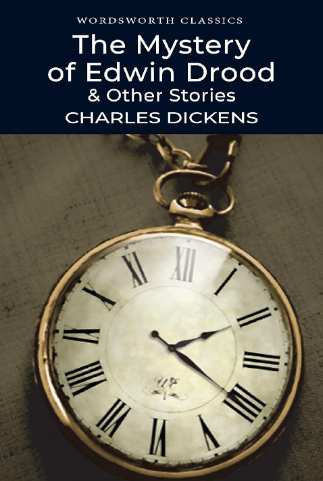The Mystery of Edwin Drood

"The Mystery of Edwin Drood," Charles Dickens' final novel, was left unfinished at the time of his death in 1870. The incomplete state of the novel has spurred much speculation and numerous attempts to complete it.
The story is set in the fictional cathedral town of Cloisterham and centers around the disappearance of Edwin Drood. Edwin is engaged to Rosa Bud, both of them orphans raised to fulfill their parents' dying wish for their union. However, Edwin and Rosa mutually agree to break off the engagement, realizing they do not love each other.
Edwin's uncle, John Jasper, is a choirmaster and secret opium addict who harbors a dangerous obsession with Rosa. Jasper's malevolent feelings towards Edwin are hinted at through his intense jealousy and fixation on Rosa.
Neville Landless, a hot-headed young man from Ceylon, comes to Cloisterham with his twin sister Helena. Neville quickly develops feelings for Rosa, leading to tensions with Edwin. After a heated argument between Neville and Edwin, Edwin mysteriously disappears, and suspicion falls on Neville.
The novel also features a colorful cast of characters, including the kindly Reverend Crisparkle, the bumbling Durdles, and the mysterious Princess Puffer, who runs an opium den and knows of Jasper's addiction.
The novel ends with Edwin’s disappearance unresolved, leaving the mystery of his fate and the true nature of Jasper's involvement a tantalizing enigma. Various clues suggest Jasper’s guilt, but without a resolution, the story remains open to interpretation.
"The Mystery of Edwin Drood" occupies a unique and intriguing place in Charles Dickens' literary canon. As his final and unfinished work, it presents both a tantalizing glimpse into the evolution of his writing and a frustratingly unresolved mystery that has fascinated readers and scholars for over a century.
The novel's unfinished state adds a layer of mystery and speculation. Readers are left to wonder how Dickens intended to resolve the story, and this open-ended nature has inspired numerous completions and adaptations, reflecting the enduring fascination with the narrative.
"The Mystery of Edwin Drood" delves into darker psychological territory than some of Dickens' earlier works. Themes of obsession, addiction, and hidden malevolence are explored through the character of John Jasper, showcasing Dickens' ability to delve into complex human emotions and moral ambiguities.
The novel is often seen as Dickens' foray into the detective and mystery genre, with elements of suspense and crime woven into the fabric of the story. This genre experimentation was relatively new for Dickens, indicating a possible new direction in his literary career.
Despite being unfinished, the novel features Dickens' trademark rich characterization and vivid setting. The atmosphere of Cloisterham, the intricacies of its social dynamics, and the detailed portrayal of its inhabitants reflect Dickens' unparalleled ability to create immersive worlds.
The novel's unresolved mystery has significantly impacted popular culture, inspiring numerous literary continuations, adaptations for stage and screen, and scholarly debates. This ongoing engagement with the story underscores its lasting appeal and the enduring power of Dickens' storytelling.
In summary, "The Mystery of Edwin Drood" stands out in the Dickens canon as an unfinished work that tantalizes with its potential and provokes ongoing speculation. Its exploration of darker themes, innovative mystery elements, and rich characterization ensure its place as a fascinating, if incomplete, testament to Dickens' literary genius. The novel's legacy is marked by the curiosity it inspires and the creative endeavors it has prompted, making it a significant, albeit enigmatic, part of Dickens' oeuvre.